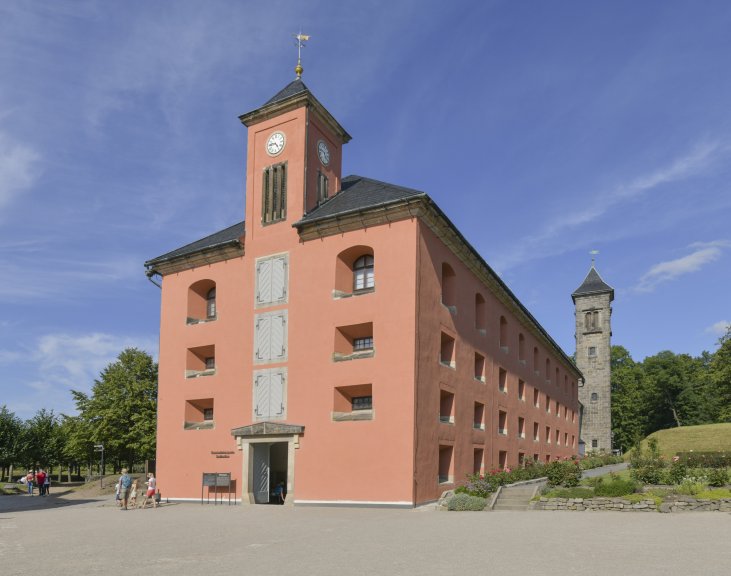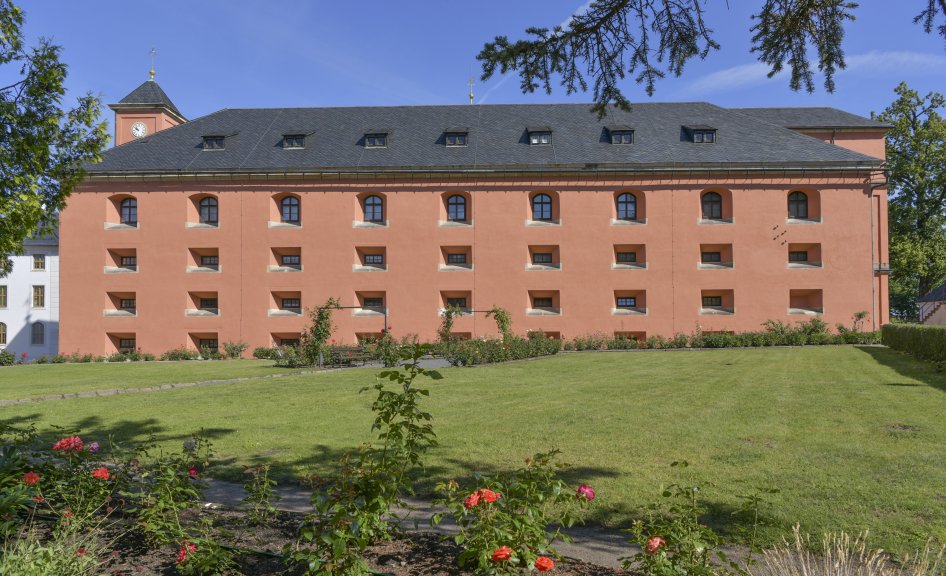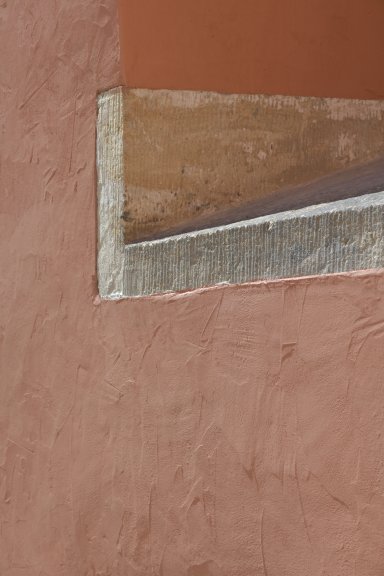Königstein Magdalenenburg Fortress
Plaster finish (pre-splaster, underplaster, top plaster) as a trowel-smooth coat, acc. to findings and surrounds of late 19th century. Unusual reddish shade complies with the frame and was dye-penetrated because of the weathering of the paint. Plaster application on irregular sandstone on the window surrounds.
Inne produkty Baumit
HR-Putz
Dodatkowa informacja
The Renaissance castle was erected in 1621/22. In 1818/19, it was reconstructed to form a bomb-proof provisions magazine. Since then, the Magdalenenburg has had the appearance of a military fortification. The extensive reconstructions showed that - except for high weatherworn damage - large cracks caused by the substrate. Moisture and salt contamination affect the building envelope in the plinth area. To increase the resistance of the plinth plaster surfaces, a decision was made on a plaster structure with Baumit Sanierputz-WTA. Because of the large surface, the use of a machine-compatible lime plaster presented itself for all surfaces. The brickwork was strengthened by crack injections under pressure and partial repairs to the plastering work. To further minimise the tendency to cracks, an additional layer of reinforcing plaster was applied. Based on the examined original mortar samples as well as the results from several working samples and sample surfaces, a finishing plaster was applied, whose structure and execution correspond to the version of the late 19th century. The required vivid structure was achieved with a trowel-smooth coat. The unusually reddish shade corresponds to this setting. To ensure an enduring appearance of the fortress on a rocky plateau in a harsh climate, the finishing plaster was dye-penetrated correspondingly. Thus, expected disintegrations of the painting will not result in the formation of ugly spots as in case of a white plaster. Furthermore, the plaster had to be applied to irregular sandstone workpieces of the window surrounds. Here, the reinforcing plaster served as a bond plaster since work on the boasted limestone surfaces had partially to be done. The visual correction was made during coating. All designs were sampled in detail in agreement with the principal and the heritage preservation authorities. The requirements for the technologies and the preservation of monuments were met.



